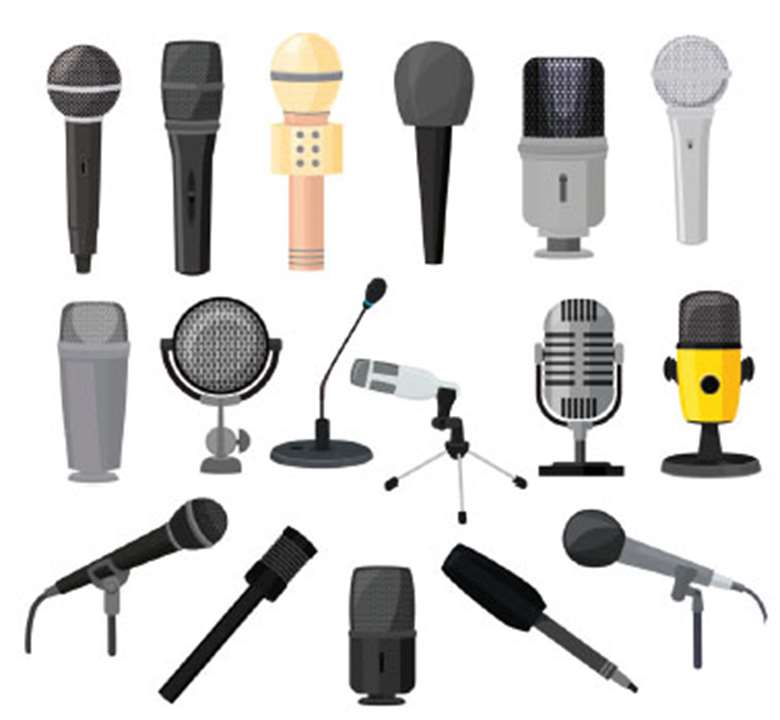Tech Column: Capturing nuance in remote grade exams
David Guinane
Saturday, May 1, 2021
In last month's issue, we touched upon challenges music teachers and students face when approaching remote grade exams. Here, David Guinane explores equipment for improving audio quality, but discovers that, as ever, there's more to it than meets the ear.

Creativeteam/AdobeStock
In recent months, recorded grade exams have ‘plugged the gap’ as we await the safe return of face-to-face examinations. Parents and instrumental teachers have become recording engineers as they attempt to capture a students’ musicianship on smartphones. The biggest complaints are around sound quality, as smartphone microphones are not designed to capture the subtle nuances of musicians’ performances.
An ‘upgrade’ to a device's microphone is the obvious solution, but this is not as straightforward as it seems. What follows is an attempt to navigate the minefield of aftermarket microphone solutions, and some guidance on the best ways to improve audio in recordings.
Shure MV88+
To cut a long story short, the optimal solution is to buy the Shure MV88+ (RRP £219 but can be found cheaper). This microphone is ‘plug and play’ on Apple devices and should be straightforward on most Android devices. The microphone is designed for music – for starters, it is a condenser microphone, which will capture a wider frequency range, and more of the subtleties of a performance.
It has a bidirectional cardioid pattern, which means it will pick up sounds in front of the mic, as well as some sense of the ‘room’ and the broader acoustic qualities in a performance. It is portable, well-reviewed online, and probably the most ‘foolproof’ way of improving the quality of your submissions. For all these reasons, it is also the most expensive option. Going cheaper requires more thought, as we will see.
Compatibility
Apple (iOS) devices are the safe bet for ensuring compatibility with microphones. If it says ‘works with iPhone’ on the box, and it has a Lightning connector, you can be confident of success. Apple's camera app is designed to automatically detect and use any external mic that is plugged in. Android devices differ, as each manufacturer will use a different camera app, and you can't guarantee it will automatically use an external mic without tweaking. An app such as OpenCamera will work on any relatively modern version of Android and will allow you to select the external mic when making a video.
In the case of the MV88+, the Shure website contains a non-exhaustive list of compatible phones (though many others have been shown to work without problems). Shure states clearly that ‘not all android devices provide enough power or support USB audio’, which muddies the waters somewhat.
Power is a key concern. Condenser microphones require power, which phones provide through their USB (Android) or Lightning (Apple) port. If they don't provide enough power, the microphone won't work. In this case, you need a ‘powered USB hub’ for your phone. They are available for both Apple and Android devices, but there is a plethora to choose from. Googling ‘Shure MV88+’ and the name of your phone will usually throw up a forum post where a user has detailed the success (or lack of) they have had with your chosen combination.
If you already own a microphone that doesn't have a USB or Lightning input, you'll need a converter. You can even use the headphone jack on some phones. Look for a 3.5mm ‘headphone-style’ jack with three black bands on the plug – this is the TRRS connection that microphones need. Compatibility becomes an issue here, as well as power and application support.
For the non-specialist, there are simply too many variables to track, so looking for a cheaper microphone is a false economy. Once you've bought converters and power supplies, the cost quickly adds up. Avoid cheap ‘lavalier’ style microphones that attach to a lapel; they are unlikely to be an upgrade over those built into a phone. They don't have the right ‘pattern’, as they are often designed to capture speech and not detailed audio. In my experience, I've never used a microphone that was both cheap and good.
iRig Mic Studio
If the Shure is out of your budget range and you aren't able to do the research/testing I've outlined above, you could try the iRig Mic Studio (RRP €179.99 – around £155). It looks to have the same level of compatibility and a similar level of quality as the MV88+. However, in terms of user-reviews and success stories, particularly from musicians, the Shure wins hands-down.
The only other alternative is to use a traditional audio interface plugged into a laptop and capture the video from the webcam. Finding suitable software to do this will be a challenge, and many laptop cameras won't meet the 720p minimum quality specified by many exam boards.
Though the pandemic has forced many of us to ‘upskill’ our technological competencies, reliably improving audio on smartphones is far more complex than changing your background on Zoom. If you feel you need to make this upgrade for your students, this column will at the very least give you some idea of what to put into Google when you're grappling with equipment.

